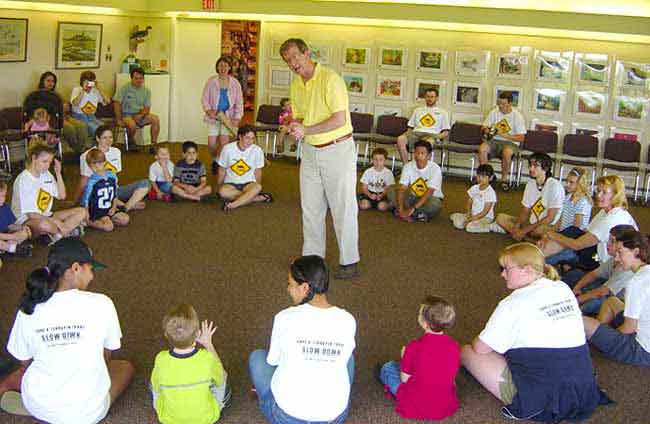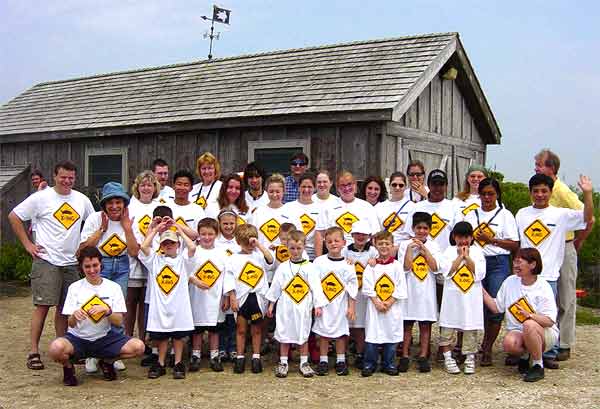|
Help Save the Terrapins!
Kindergarten Release June 12, 2003

By Jennifer McPoyle
At the Wetlands Institute, one of our goals is to restock the salt marsh with it's rightful inhabitant, the northern diamondback terrapin. In doing so, we are trying to give the terrapins a chance to rebuild their increasingly troubled population. This species’ population is troubled due to both increased traffic on coastal roads and coastal development. It is important to inform the public of the terrapin's plight so that they too can learn how to help save the terrapins.



Dr. Roger Wood gives a talk to kindergartners about the plight of diamondback terrapins.
 |
|


Before the kindergartners release the terrapins, each child learns how to properly hold one. The “turtle handshake” is the correct handling procedure in which you stick your hand out as if you are going to give someone a handshake and put a turtle in place of that someone’s hand with its head facing away from you to prevent you from getting bitten or scratched.
At the releasing grounds, each intern helps a kindergartner walk through the mushy marsh mud to the waters edge, and each terrapin is released by a kindergartner into the water. Each kindergartner
gets a chance to release a terrapin and everyone has a lot of fun — especially the terrapins, anxious and happy to return to their natural habitat.
But they couldn't have done it without everyone’s help. Hopefully, with our help, this species will regain its population. We are grateful for the help of our student participants and hope to continue our summer releases with them for years to come.


|